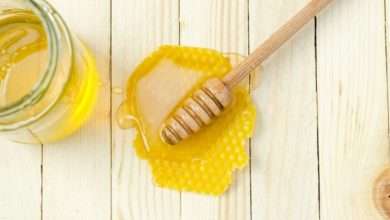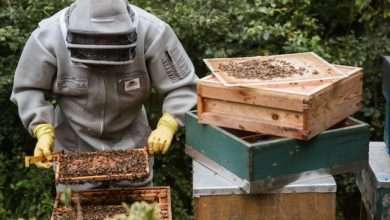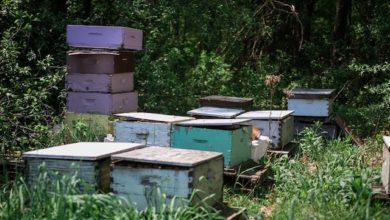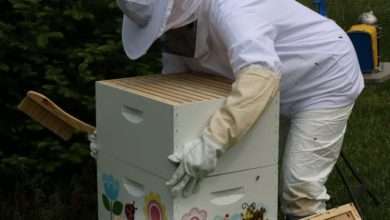What is an Escape Board in Beekeeping
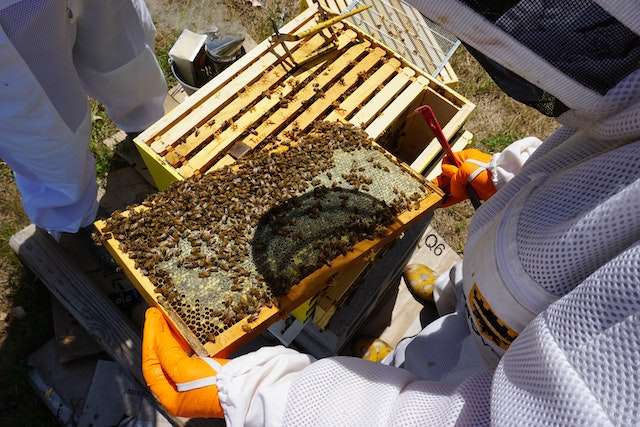
What is an Escape Board in Beekeeping?
Beekeepers know that harvesting honey from hives can be a challenging task. It is an essential procedure that requires skill and a few handy tools.
One of those essential tools that every beekeeper should have is an escape board. It is an effective way to separate the honey super from the brood chamber, preventing any pending brood from getting hurt during the process.
Understanding Escape Boards in Beekeeping
As beekeepers, it is our responsibility to make sure that our honeybees are extracted from the hive in a way that doesn’t harm them or the honey they store. One of the essential tools that help beekeepers in this regard is escape boards.
Definition and Description
An escape board is a beekeeping tool used to remove bees from supers (honey chambers) during harvesting without stressing or harming them. The board is designed to allow workers, drones, and the queen to leave the supers but makes it difficult or impossible for them to return. It has a one-way mechanism that makes it difficult for bees to go back into the supers. Thus, they are forced to evacuate, leaving the supers with all the honey intact.
Purpose of Escape Boards in Beekeeping
Generally, escape boards are used in beekeeping to reduce the stress of removing honey because bees can become aggressive when they are in their honey chambers.
With an escape board, beekeepers can evacuate honey chambers without worrying about getting stung or killing bees. It also helps prevent the honey from smelling or tasting like smoke, which is particularly important for beekeepers who harvest honey for sale.
Different Types of Escape Boards
There are several escape boards available in the market, each designed to cater to different beekeeping needs. However, the most common ones include:
- Wooden Escape Boards: These are the traditional type of escape board with a thin metal or plastic mesh that allows bees to crawl out but prevents them from returning to the supers. They are easy to use and available in different dimensions, although they can be damaged by the bees’ propolis (a substance that bees use to close openings in the hive).
- Plastic Escape Boards: As the name implies, they are made of plastic and also feature a grid that allows bees to escape but makes it challenging for them to climb back into the supers. They are more durable than wooden boards and do not require painting or staining.
- Porter Escape Boards: These boards are the most popular among beekeepers because they are simple to use and highly efficient. They feature a one-way bee escape valve that closes when the bees crawl through but opens when they try to return. They have different models, including single and double-sided escape board.
Process of Using an Escape Board in Beekeeping
An escape board is a wooden board with a set of one-way valves through which the bees can easily travel from the honey super to the brood chamber but not the other way around. A beekeeper can use the board to evacuate the bees from the honey super. The process of using an escape board is relatively simple.
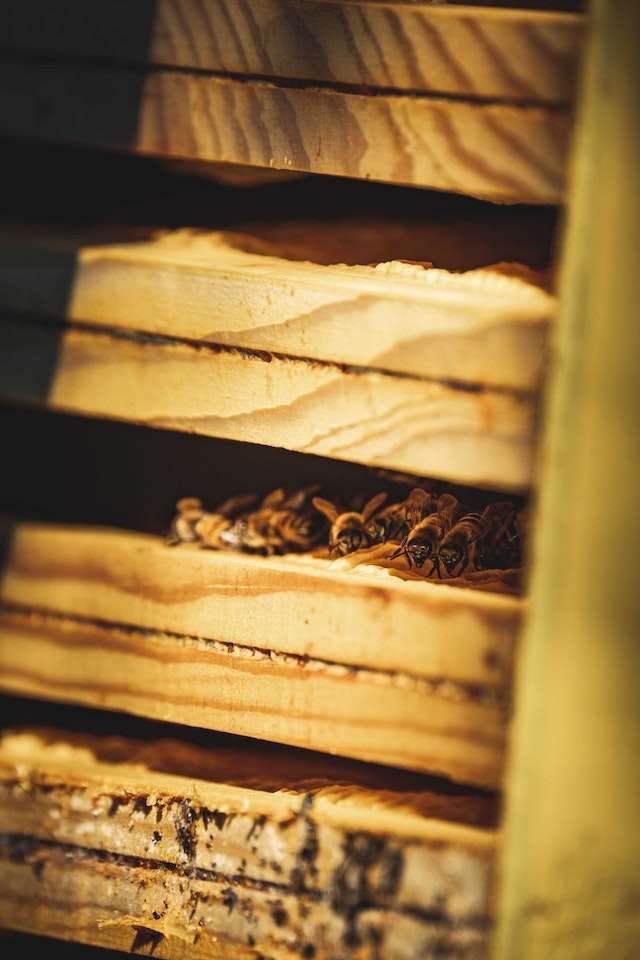
First, the beekeeper removes the honey-filled frames from the supers. Next, they place the escape board between the supers and the brood chamber, ensuring all the valves point downwards. The bees in the honey super will pass through the valves and eventually find themselves in the brood chamber.
It takes some time for all the bees to vacate the honey super, but once they do, the beekeeper can remove the super without worrying about harming the bees.
Benefits of Using an Escape Board
Using an escape board in beekeeping has several benefits. Firstly, it makes the honey harvesting process less harmful to the bees. With an escape board, a beekeeper can ensure proper separation of the supers from the brood and reduce the disturbed bee population. Bees are essential to the ecosystem; thus, it is crucial to handle them with the utmost care.
Another advantage of using an escape board is that it saves time. Using an escape board is less time-consuming compared to the traditional process of brushing bees off the frames. The board can help remove all the bees as the beekeeper attends other crucial duties. Lastly, an escape board ensures that only mature bees are left behind, avoiding any premature death of brood.
Precautions to Take While Using an Escape Board
As much as an escape board enhances safety and convenience for the bees and beekeeper, it is imperative to take precautions. One of the precautions to consider is ensuring that the escape board is clean and dry before use. It can be challenging to handle the board when wet, and it will not be useful if the bees stick to it.
Another precaution to take is not to leave the honey super on top of the hive for too long. The escape board is a tool that removes bees from the super rather than preventing them from entering. Leaving the super for too long can lead to bees finding their way back in, rendering the use of an escape board futile.
When Should You Use an Escape Board?
When deciding whether to use an escape board, there are several important factors to consider. One of the most significant is the size and strength of your colony. If your hive is robust, the honeycomb may be too heavy for the bees to move through an escape board. Be sure to check the strength of your colony before attempting to use an escape board.
Another factor to consider is the time of year. Bees are most active during the summer and fall months, so it’s best to avoid using an escape board during this time. If you attempt to remove bees from the hive during their most active months, they may become agitated and aggressive. This can make it difficult to extract honey safely.
Different Scenarios Where an Escape Board Comes in Handy
One scenario where an escape board comes in handy is during the winter months. As bees become less active during the colder months, it becomes easier to remove honey from the hive. An escape board can help you extract honey without damaging the hive or disturbing the bees.
Another situation where an escape board may be useful is during a hive inspection. If a hive is congested or overcrowded, it can be challenging to complete a thorough inspection. An escape board can help you remove bees from the hive more easily, making it easier to inspect the combs and evaluate the colony’s health.
The Best Time of Year to Use an Escape Board
The best time of year to use an escape board is during the spring months. By this time, the bees have spent the winter months conserving and preparing for the upcoming season. They may be less active during this time, making it easier to remove honey from the hive. If the weather is mild, it’s also a great time to inspect the hive and make any necessary changes.
How to Make an Escape Board
It is essential for beekeepers to have an escape board when conducting honey extraction. An escape board is a useful tool that helps to channel bees out of the honey supers, making it easy to collect honey without harming or killing bees. While escape boards are readily available in beekeeping stores, making one can be both cost-effective and rewarding. In this chapter, we will provide you with a DIY guide on how to make an escape board from scratch.
Materials Needed for Making an Escape Board
- 1 wood board, dimension 19 7/8″ x 16 ¼”
- 4 wooden slats, dimension 3/8″ x 3/8″ x 19 7/8″
- 2 wood blocks, dimension ¾” x 1″ x 2 ¼”
- 1 metal screen, dimension 20″ x16″
- Wood glue
- Metal staples
- Nails
Step-by-Step DIY Guide
- Cut the wooden slats and wood blocks to their specified dimensions. The wooden slats will be used as frame support for the metal screen, and the wood blocks will be used to raise the escape board from the hive’s top edge.
- Build the frame by gluing the wooden slats to the edges of the wooden board. You can also nail them for extra strength.
- Staple the metal screen to the wooden frame. Double-check that it is tight and properly held in place.
- Glue the wood blocks to the board’s bottom edge, spaced evenly from each other. These blocks will raise the escape board to the same level as the honey supers.
- Leave the escape board to dry completely and, if needed, sand the rough edges.
Costs and Benefits of Making Your Own Escape Board
Making your own escape board is cost-effective compared to buying one from a store. To make your own escape board, the estimated cost for materials is around $20, while a pre-made one from a store can cost anywhere from $30 to $60.
Moreover, creating your own escape board provides a sense of satisfaction and accomplishment. You get to save money and, at the same time, enhance your beekeeping skills. It can also be customized to suit your individual needs.
Conclusion
Escape boards are essential pieces of equipment for beekeepers. They are useful for quickly moving bees from one place to another, helping a weak colony thrive, and for harvesting honey. They are also a cost-effective and time-saving solution for beekeepers.
If you’re looking for a way to make your beekeeping easier, an escape board may be just what you need.
FAQ
How does a bee escape board work?
- An escape board works by using a one-way valve that allows bees to exit the honey supers but prevents them from returning. This way, the beekeeper can remove the honey supers without harming the bees.
How do you use the escape board in a hive?
- To use an escape board, the beekeeper places the board between the honey supers and the brood boxes, with the escape valve facing down towards the honey supers. The bees will exit the honey supers through the escape valve and gather in the brood boxes. After 24-48 hours have passed, the beekeeper can safely remove the honey supers without disturbing the bees.

Which way does a bee escape board go?
- The bee escape board should be placed with the escape valve facing down towards the honey supers.
What are the benefits of using an escape board in beekeeping?
- Using an escape board allows beekeepers to safely and easily remove honey from their hives without harming the bees. Additionally, it helps to ensure that the honey is of the highest quality, as there is no risk of accidentally squishing bees during the harvesting process.
Can escape boards be used on all types of hives?
- Escape boards can be used on most types of hives, including Langstroth, Top Bar, and Warre hives. However, it is important to ensure that the escape board fits properly and is installed correctly to prevent any issues with bee movement.
How long should an escape board be left in place?
- Escape boards should be left in place for 24-48 hours to allow all of the bees to exit the honey supers and gather in the brood boxes. After this time, the beekeeper can safely remove the honey supers without disturbing the bees.
How often should escape boards be used in beekeeping?
- Escape boards are typically used during the honey harvesting season, which can vary depending on the region and climate. Beekeepers may choose to use an escape board multiple times during the season, depending on the size and health of their hive.
Can escape boards be reused?
- Escape boards can be reused multiple times, as long as they are cleaned and disinfected properly after each use. It is important to ensure that the board is not damaged or warped in any way, as this can affect its functionality and effectiveness.
How do I know if an escape board is the right tool for my beekeeping needs?
- Escape boards are a great tool for beekeepers who want to harvest honey without harming their bees. However, they may not be necessary for all beekeepers, depending on the size and health of their hive. It is important to do research and consult with other beekeepers to determine whether an escape board is right for you.
